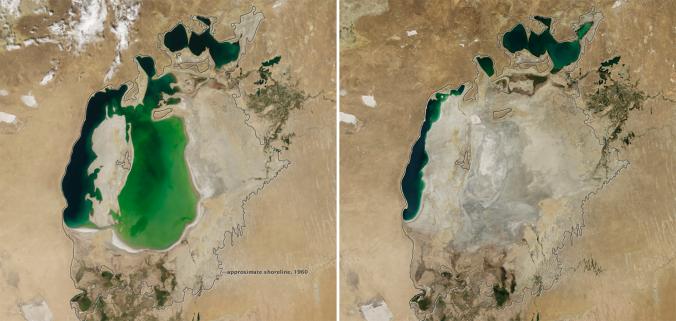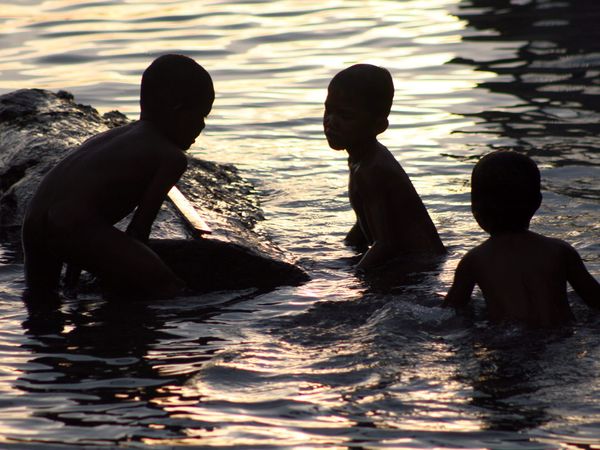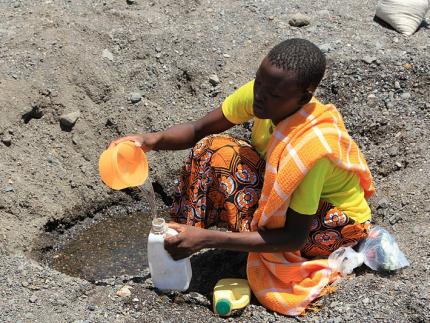Once the fourth largest lake in the world, Central Asia’s shrinking Aral Sea has reached a new low, thanks to decades-old water diversions for irrigation and a more recent drought. Satellite imagery released this week by NASA shows that the eastern basin of the freshwater body is now completely dry.

In 2000 (left), Asia’s Aral Sea had already shrunk to a fraction of its 1960 extent (black line). Further irrigation and dry conditions in 2014 (right) caused the sea’s eastern lobe to completely dry up for the first time in 600 years.
“It is likely the first time it has completely dried in 600 years, since medieval desiccation associated with diversion of Amu Darya [river] to the Caspian Sea,” Philip Micklin, an Aral Sea expert and a geographer emeritus from Western Michigan University, in Kalamazoo, told NASA about the sea’s eastern basin. (See “Photos: Dried Up Aral Sea Aftermath.”) Read more





